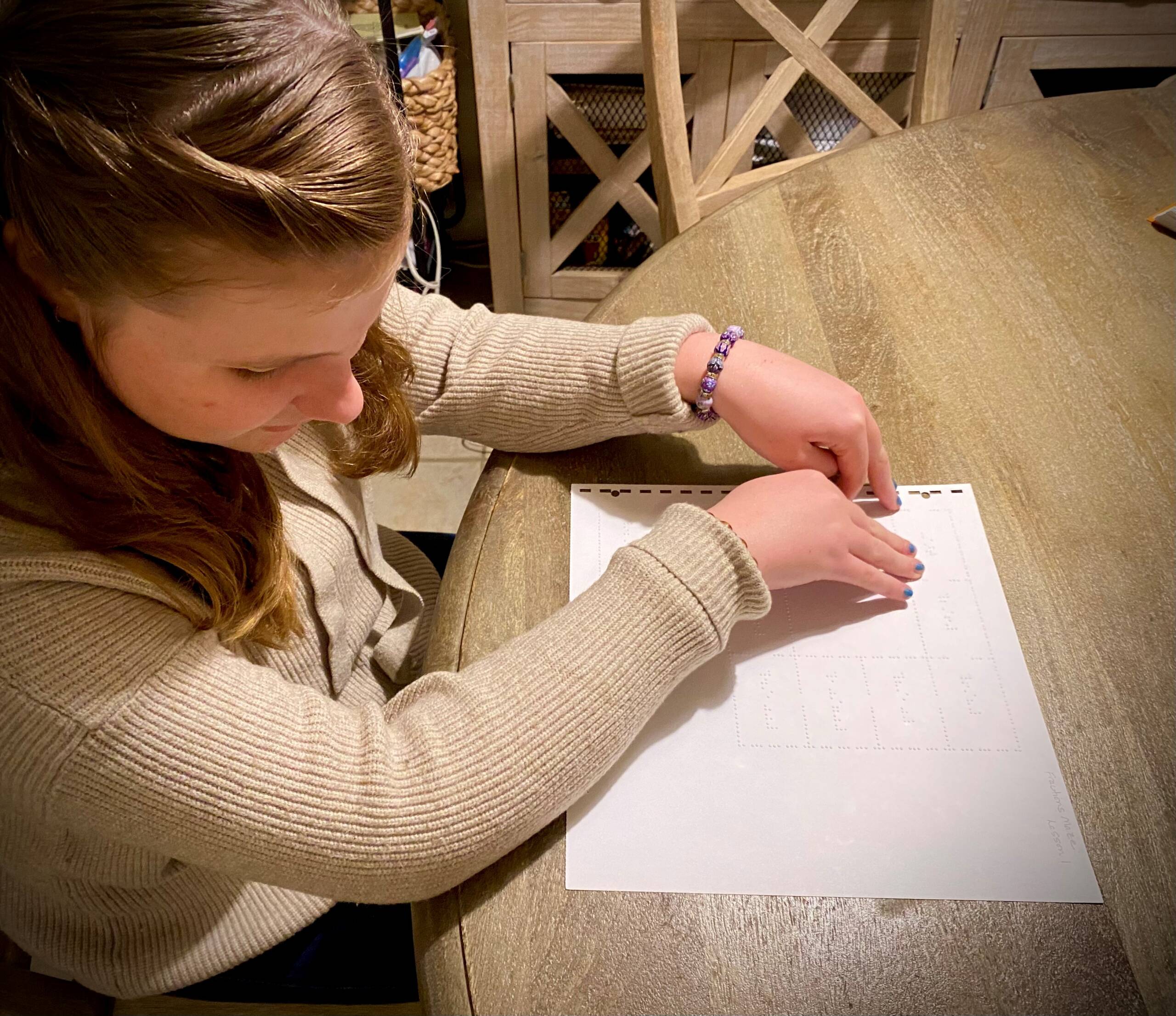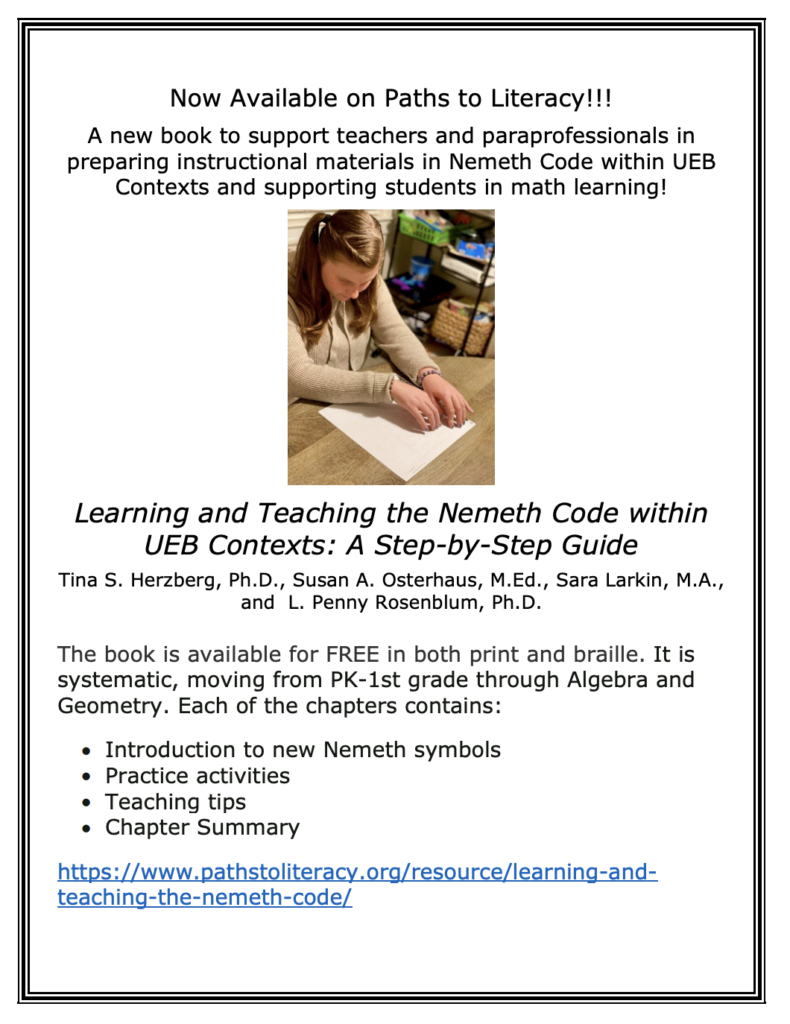
Learning and Teaching the Nemeth Code within UEB Contexts: A Step-by-Step Guide
This book provides opportunities to build Nemeth Code skills and learn about strategies and resources for teaching the Nemeth Code. The book contains multiple examples of STEM materials transcribed into braille.
Welcome to Learning and Teaching the Nemeth Code within UEB Contexts: A Step-by-Step Guide written by Tina Herzberg, Susan Osterhaus, Sara Larkin, and L. Penny Rosenblum. The book is available in print and braille using the links below.
Each of the 8 chapters contains:
- INTRODUCTION TO NEW NEMETH SYMBOLS: Each chapter begins by
introducing Nemeth symbols included in the chapter. - PRACTICE ACTIVITIES: There are reading and writing activities to
complete as new Nemeth Code symbols are introduced. Answer keys for the
practice activities are provided at the end of the chapter. - TEACHING TIPS: Throughout the book, we provide strategies on how to
teach the Nemeth Code symbols to students. - CHAPTER SUMMARY: Each chapter contains a summary of key points
about the math topics covered in the chapter and the rules about how to
transcribe the symbols for Nemeth Code within UEB Contexts.
The book is systematic, moving from PK-1st grade through Algebra and Geometry. There are appendices titled Greek Letters, Biology, Chemistry, Periodic Table, Physics, and Metric System.
A note for braille readers: For Chapters 2 and 7, there are files that include the tactile graphics which are shown in the respective chapters. There are three options for producing the graphics: using a PIAF, a Tiger embosser, or a braille embosser. If you use a braille embosser, you will need to add components, using the collage method. The blank page in the chapter will need to be replaced with the braille graphic page you produce.
The authors wish to thank Michael Cantino, a certified braille transcriber who specializes in creating accessible materials for complex subject matter, including art, STEM, and wayfinding. Michael’s attention to detail in preparing the braille files for the book is greatly appreciated.
Please contact Dr. Tina Herzberg at herzberg@uscupstate.edu if you have any questions.
Table of Contents
- Chapter 1: Nemeth Code Symbols Used in Grades PK-1 (PDF and BRF)
- Chapter 2: Additional Nemeth Code Symbols and Formats Used in Grades
PK-1 (PDF and BRF)- Graphics for Braille Readers
- PIAF Graphics (PDF)
- Tiger Graphics (Word document) Note: The braille font in this file will only show up correctly if you have the Tiger Software Suite with the Tiger font installed on your computer.
- Chapter 7: Geometry for All Grade Levels (PDF and BRF)
- PIAF graphics (PDF)
- Tiger Graphics (Word document) Note: The braille font in this file will only show up correctly if you have the Tiger Software Suite with the Tiger font installed on your computer.
- Chapter 8: An Introduction to Nemeth Code Symbols Used in Algebra 1, Algebra 2, and Advanced Mathematics (PDF and BRF)
- Appendices (PDF and BRF)
- Note: Abbreviations (e.g., KE, ME, EPE, GPE), units of measurement (e.g., J, s, kg, m), and variables (e.g., d, V, R, f) are transcribed differently. It is important to determine how a letter or group of letters is being used in a specific context. This may require a discussion with a student’s STEM teacher.

